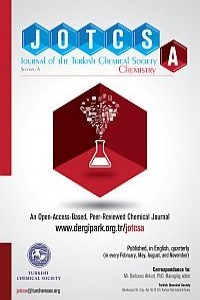KERATOCONUS TREATMENT: SOME PHYSICAL PARAMETERS OF DIFFERENT SOLUTIONS FOR CORNEAL CROSS-LINKING
Cornea, the primary refractive element of the eye is a clear, transparent and elastic tissuethat acts as a physical barrier between the external environment and the internal ocularelements. Cornea consists of five layers. Its Stroma layer is rich with proteins especiallywith collagen. Collagen is among the most abundant fibrous proteins and fulfils a variety ofmechanical functions. When cross-links between the collagen fibers are weak, cornea willtend to thin and be deformed. This kind of eye disease is called Keratoconus.A unique treatment for Keratoconus is called corneal cross-linking (CLX). During the CLXprocedure the cornea is exposed to UV-A light and ribofilavin-dextran solution is instilledonto the cornea [1]. This treatment works by increasing collagen cross-links in the Stromalayer. CXL method has some problems which are explained in reference [2].In this study, temperature and pH level change were examined for different solutions. Ninedifferent solutions with varying concentrations were prepared by using riboflavin, dextranand dextrin substances. Behavior of these solutions at different temperatures andeffectiveness of these concentrations according to eye's pH level were investigated. Theirabsorption and fluorescence spectrum were also investigated in the critical concentration%0.1 (w/v) of riboflavin [3]. Their diffusion coefficients were found from the ratio ofluminescence intensities measurement by using Fick’s Diffusion Law.
Anahtar Kelimeler:
-
KERATOCONUS TREATMENT: SOME PHYSICAL PARAMETERS OF DIFFERENT SOLUTIONS FOR CORNEAL CROSS-LINKING
Cornea, the primary refractive element of the eye is a clear, transparent and elastic tissuethat acts as a physical barrier between the external environment and the internal ocularelements. Cornea consists of five layers. Its Stroma layer is rich with proteins especiallywith collagen. Collagen is among the most abundant fibrous proteins and fulfils a variety ofmechanical functions. When cross-links between the collagen fibers are weak, cornea willtend to thin and be deformed. This kind of eye disease is called Keratoconus.A unique treatment for Keratoconus is called corneal cross-linking (CLX). During the CLXprocedure the cornea is exposed to UV-A light and ribofilavin-dextran solution is instilledonto the cornea [1]. This treatment works by increasing collagen cross-links in the Stromalayer. CXL method has some problems which are explained in reference [2].In this study, temperature and pH level change were examined for different solutions. Ninedifferent solutions with varying concentrations were prepared by using riboflavin, dextranand dextrin substances. Behavior of these solutions at different temperatures andeffectiveness of these concentrations according to eye's pH level were investigated. Theirabsorption and fluorescence spectrum were also investigated in the critical concentration%0.1 (w/v) of riboflavin [3]. Their diffusion coefficients were found from the ratio ofluminescence intensities measurement by using Fick’s Diffusion Law.
Keywords:
-,
- Başlangıç: 2014
- Yayıncı: Türkiye Kimya Derneği
Sayıdaki Diğer Makaleler
SODYUM KANALINDA İYON TRANSFERİNİN ENERJİSİ
Murat ÇAVUŞ, Turgut BAŞTUĞ, Serdar KUYUCAK
KERATOCONUS TREATMENT: SOME PHYSICAL PARAMETERS OF DIFFERENT SOLUTIONS FOR CORNEAL CROSS-LINKING
Hilal Özdemir, N. Dağyar, Gülşen Evingür, F. Acar
Muhammed BÜYÜKTEMİZ, Yavuz DEDE
Selcan Karakuş, Tuba Şişmanoğlu
BAZI FLAVONOİDLERİN YARI-DENEYSEL ÇALISMASI
